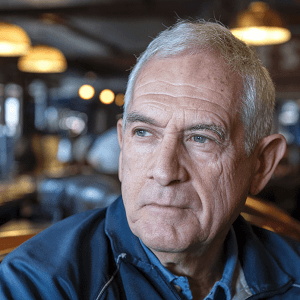Discover the innovative world of light sport aviation through Sling Aircraft, a South African manufacturer revolutionizing the industry with their cutting-edge designs and exceptional performance. Whether you’re a seasoned pilot or aviation enthusiast, understanding Sling’s contribution to modern aviation will help you appreciate their remarkable achievements in making flying more accessible and enjoyable.
Sling Aircraft has established itself as a leading force in light sport aviation, delivering innovative and high-performance aircraft that captivate pilots worldwide. As a South African manufacturer, they’ve revolutionized the industry by seamlessly blending cutting-edge design with practical functionality, setting new benchmarks in the light sport aircraft (LSA) sector.
With a mission to create affordable and efficient flying experiences, Sling Aircraft has become synonymous with excellence in the LSA market. Their aircraft stand out for their:
- Sleek, aerodynamic design
- Advanced avionics systems
- Impressive performance capabilities
- Reliable construction
- Pilot-friendly features
What is Sling Aircraft?
Sling Aircraft specializes in manufacturing light sport aircraft that combine lightweight construction with superior handling characteristics. Their product range includes both ready-to-fly aircraft and kit planes, serving diverse aviation needs from training to recreational flying.
The company’s distinctive approach involves:
- All-metal construction for enhanced durability
- Integration of modern avionics
- Advanced safety features
- Innovative design elements
- Comprehensive pilot support systems
History and Development of Sling Aircraft
Founded in 2006 by aviation enthusiasts Mike Blyth and James Pitman in Johannesburg, South Africa, Sling Aircraft began with a vision to democratize flying. Their journey started with the development of the Sling 2, which set new standards in the LSA category.
| Milestone | Achievement |
|---|---|
| 2006 | Company foundation in Johannesburg |
| Initial Launch | Development of Sling 2 |
| 2011 | Round-the-world flight in Sling 4 |
| Recent Innovation | Introduction of Sling TSi and NGT |
Sling Aircraft Models and Features
Sling’s aircraft lineup demonstrates their commitment to innovation and excellence in aviation design. Each model incorporates cutting-edge technology while maintaining focus on efficiency, reliability, and pilot satisfaction.
Popular Sling Aircraft Models
- Sling 2 – flagship two-seat LSA with exceptional handling
- Sling 4 – versatile four-seat aircraft for increased capacity
- Sling TSi – high-performance variant with enhanced speed capabilities
- Sling NGT – specialized next-generation trainer for flight schools
Key Features of Sling Aircraft
Sling aircraft incorporate numerous innovative features that set them apart in the LSA market:
- Advanced glass cockpit displays
- All-metal airframe construction
- Aerodynamic design optimization
- Integrated safety systems
- Ballistic parachute capability
- Modern avionics integration
Performance and Safety of Sling Aircraft
Sling Aircraft excels in combining outstanding performance with comprehensive safety features. Their designs prioritize both capability and security, making them ideal for various aviation applications. While specific performance metrics vary by model, all Sling aircraft maintain high standards in speed, range, and fuel efficiency, complemented by robust safety systems and structural integrity.
Performance Specifications
Sling aircraft deliver exceptional performance within the light sport aviation category. Under optimal conditions, these aircraft demonstrate remarkable capabilities:
- Maximum speed – up to 513 knots
- Range capability – extending to 6,200 nautical miles
- Versatile platform suitable for both short and long-distance flights
- Adaptable performance across various flight conditions
Performance variations depend on several key factors:
- Altitude conditions
- Environmental temperature
- Aircraft configuration
- Payload weight
- Weather conditions
Safety Features and Considerations
Sling Aircraft incorporates comprehensive safety features across their fleet, demonstrating their commitment to pilot and passenger protection. Their advanced safety systems include:
- Ballistic parachute system for emergency situations
- Reinforced cockpit design for impact protection
- Modern avionics suite for enhanced situational awareness
- Traffic awareness displays
- Weather information systems
- Terrain mapping capabilities
- Emergency life rafts (select models)
Maintenance and Cost of Sling Aircraft
Sling Aircraft emphasizes reliability and maintenance simplicity in their design philosophy. Their robust construction and straightforward engineering approach contribute to manageable long-term ownership costs compared to other light sport aircraft.
Maintenance Requirements
Regular maintenance follows a comprehensive schedule including:
- Routine oil changes
- Filter replacements
- Airframe inspections
- Engine system checks
- Avionics system verification
The use of widely available Rotax engines simplifies maintenance procedures and parts accessibility, supported by detailed manufacturer documentation and technical support.
Cost of Owning a Sling Aircraft
| Cost Category | Average Cost (per hour) |
|---|---|
| Maintenance | $34.13 |
| Miscellaneous (landing fees, parking, supplies) | $32.66 |
Additional ownership expenses include:
- Fuel costs
- Hangar or tie-down fees
- Insurance premiums
- Equipment upgrades
- Unexpected repairs
Training and Community for Sling Aircraft Enthusiasts
The Sling Aircraft ecosystem extends beyond aircraft ownership, encompassing comprehensive training programs and a vibrant community of aviation enthusiasts. This network provides essential support for safe and efficient aircraft operation.
Training Programs for Sling Aircraft Pilots
Comprehensive training programs include:
- Ground school instruction
- Hands-on flight training
- Systems operation education
- Performance characteristics study
- Safety features familiarization
- Type-specific training from authorized dealers
- Advanced technique instruction
Joining the Sling Aircraft Community
The Sling Aircraft community represents a vibrant ecosystem of aviation enthusiasts, pilots, and industry professionals. This dynamic network provides invaluable support through various engagement opportunities:
- Local fly-in events and meetups
- International aviation gatherings
- Online forums and discussion groups
- Knowledge-sharing platforms
- Mentorship opportunities
- Technical support networks
The collaborative spirit within the community manifests through active participation and information exchange. Members regularly contribute by:
- Sharing flight experiences and stories
- Providing maintenance tips and tricks
- Documenting aircraft modifications
- Offering route planning advice
- Supporting new pilots in their journey
- Organizing community events
Whether you’re a seasoned pilot or new to light sport aviation, engaging with the Sling Aircraft community enhances your flying experience through collective wisdom and shared passion. The community’s supportive nature ensures continuous learning and growth throughout your aviation journey, making it an essential resource for all Sling aircraft enthusiasts.





Leave a Reply